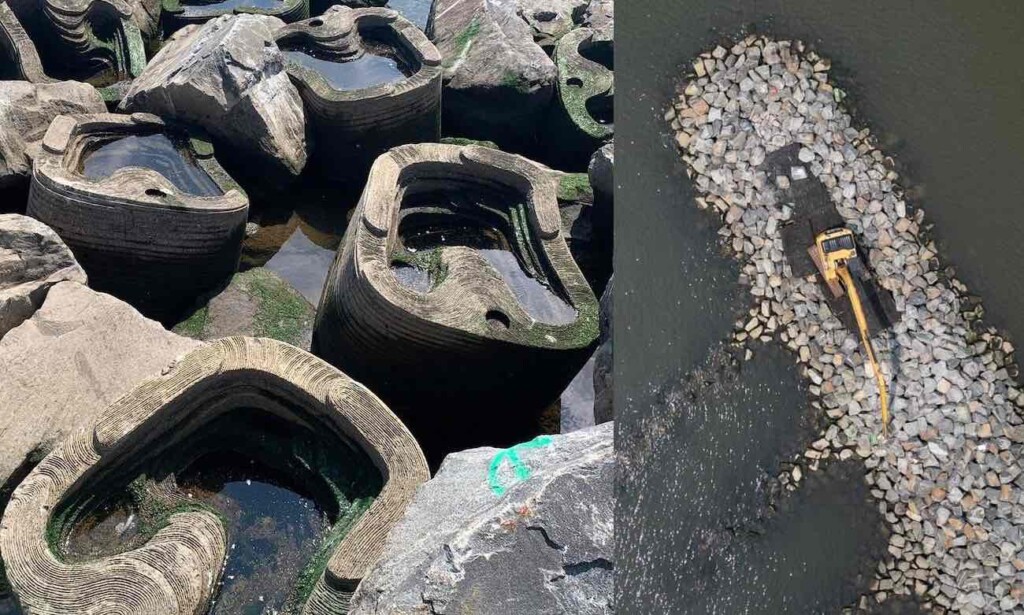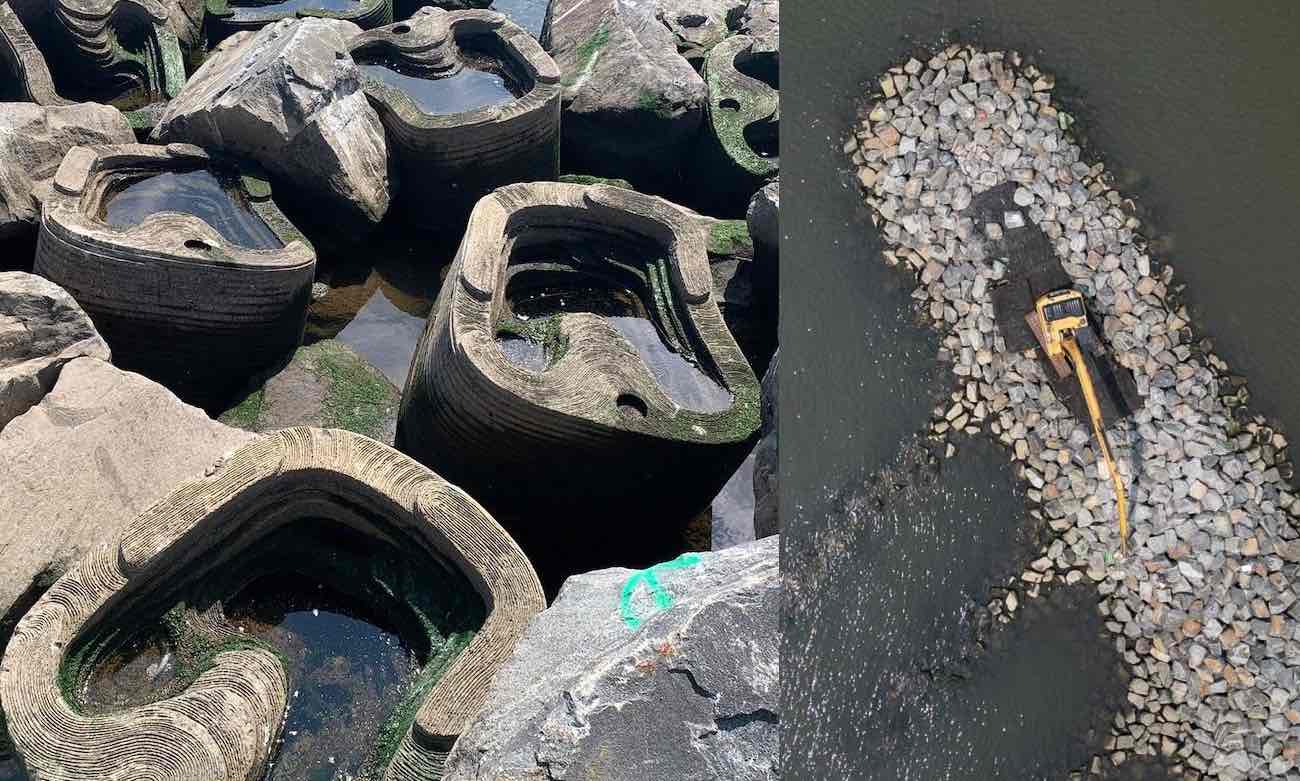
Off Staten Island, a new concrete breakwater is being assembled that makes room for nature in a beautiful, yet simple way.
Dubbed a ‘Living Breakwater,’ every one of the blocks is specially formed to maximize the space for bivalves like oysters to glom onto, while above the water line, depressions capture the seawater and allow for tidal pools to form in the tops.
Designed by Kate Orff, of the eco-design and architecture firm SCAPE, their brilliance comes from the subtle tweak to an existing product that makes room for nature.
Orff had originally created them for a US Department of Housing and Urban Development contest in the wake of Hurricane Sandy called Rebuild by Design, but now, Living Breakwaters have been awarded the Obel Award (not to be confused with the Nobel Award) for this year’s theme of adaptation.
“The physical design of Living Breakwaters is an ingenious mix of natural and carefully modeled artificial elements that mimic naturally occurring reef formations in order to support marine life,” read the Obel Award citation.
MORE NATURAL ARCHITECTURE: Stunning ‘House of Arches’ Uses Gorgeous Geometry to Keep Three Generations Cool in Rajasthan’s Heat
“Architecture must recognize its ecological and social responsibilities. Living Breakwaters does exactly that. As such, this relatively low-cost, low-tech response provides a seminal example of how to design not against but with nature in adapting to the changes that lie ahead.”
As oysters colonize and put the ‘life’ in the Living Breakwaters, the space between each individual block will narrow and harden, making it more effective as a flood and storm defense system.
Orff explained that with her invention and other solutions like it, humanity can act fast to tie back the various components of nature’s protective systems.
MORE NATURE-BASED SOLUTIONS: Skyscraper Bursting with 80,000 Plants Opens to the Public in Singapore–LOOK
“[It] will not only protect humans and revitalize the coastline of New York City but also restore lost marine biodiversity,” said American landscape architect Martha Schwartz, who served as chair of this year’s Obel Award jury.
“This is a visionary project that tackles the full task of adaptation, and which has the capacity to inspire and to positively impact vulnerable shorelines worldwide.”
SHARE This Award-Winning, Osyter-Approved Harbor Wall With Your Friends…




















